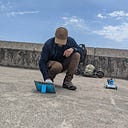In our conversation, we delved into several key aspects of your work with BlueGeo and how you’re integrating various data sources into this geospatial AI system. We began by discussing your existing catalogs like Copernicus with Sentinel-2 as a collection, Ukraine HARM as both a catalog and collection, and FIRMS with AREA as a collection. You explained how these catalogs feed into your system and how you generate unique Datacube IDs by prefixing them with structured identifiers to ensure uniqueness across different datasets.
We also talked about the challenges with certain catalogs that don’t have inherent Datacube IDs, like FIRMS and Vancouver Watching. For FIRMS, you clarified that unique identification requires specifying the area, source, date, and time. This approach aligns with your method of maintaining a structured and consistent way to reference datacubes within BlueGeo.
Lastly, we explored the idea of adding a fifth catalog to BlueGeo, and I suggested Global Forest Watch as a valuable addition. This catalog would bring in real-time data on forests, including deforestation and land use changes, complementing your current focus areas like urban environments and wildfires.
For further exploration of these topics, you can refer to the following URLs:
- NASA FIRMS API for more details on FIRMS data handling.
- Copernicus Open Access Hub for accessing Sentinel-2 data.
- Global Forest Watch for forest and land use data.
This summary encapsulates the technical and strategic discussions we had about enhancing and expanding your geospatial AI system, BlueGeo. I’m looking forward to continuing this conversation whenever you’re ready!
continues.
